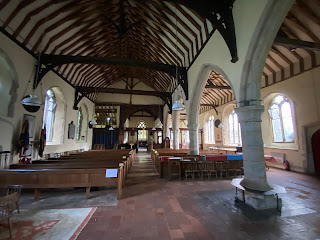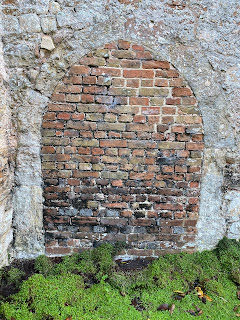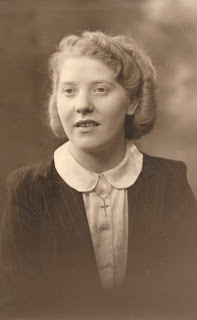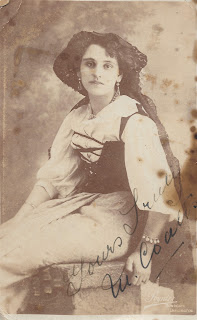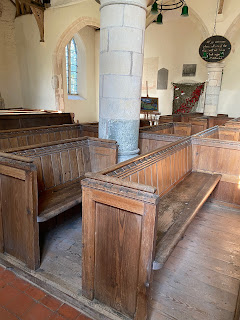Appledore in Kent is not to be confused with its namesake in Devon. Within the Ashford district of Kent it’s name comes from the Old English apuldre meaning Apple Tree. It was once a port on the River Rother and is known for having the Danish army (280 ships and 5000 men) there in 892-93 before they were defeated at Farnham by Edward The Elder. I’ve read it is also the setting for A.A.Milne’s poem “The Knight Whose Armour Didn’t Squeak”.
St. Peter and St. Paul’s was rebuilt in 1380 after the French set fire to it - records show they attacked a castle but the likelihood was that it was a timber wall around a courtyard containing the church. The original church mentioned in the Domesday book no longer exists but the 13th Century tower and North Chapel survived the French raid. The church still plays an active part in community life with items for sale inside from ornaments to fabrics. The church boasts a well preserved memorial stone for Philip Chute (d.1566) who was a standard bearer to King Henry VIII at the Siege of Boulogne in 1544. The only other stones are for deaths circa the early 1700s for the Curtis and Crosswell families. One gravestone has been brought in from the churchyard to stop further decay and belongs to James Wyatt who died at 65 years in 1848. James served at the final victory of Waterloo.
In 1989 a floor was inserted to create a bell ringing chamber nine feet above the ground.
Other photographs of the church.







